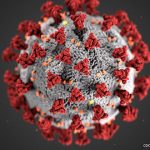Suggestions on how to assess risk and manage bone issues in chronic kidney disease patients are offered…

Subcategories:Axial SpondyloarthritisClinical Criteria/GuidelinesGout and Crystalline ArthritisMyositisOsteoarthritis and Bone DisordersOther Rheumatic ConditionsPain SyndromesPediatric ConditionsPsoriatic ArthritisRheumatoid ArthritisSjögren’s DiseaseSoft Tissue PainSystemic Lupus ErythematosusSystemic SclerosisVasculitis

Suggestions on how to assess risk and manage bone issues in chronic kidney disease patients are offered…

COVID-19 Global Alliance registry and other data on rheumatic disease patients with COVID-19 were presented…

Researchers have identified 93 genes that may play a role in systemic lupus erythematosus (SLE), including 47 genes not previously associated with SLE. Theresulting transcriptome has revealed underappreciated genes and pathways associated with the pathogenesis of SLE…
Marilynn Larkin |
NEW YORK (Reuters Health)—In postmenopausal women and men treated for at least two years with denosumab, a single infusion of zoledronate given after denosumab discontinuation does not completely prevent bone turnover and loss, researchers say. Given the findings, “bone mineral density (BMD) should probably be higher than the current target for discontinuation of bisphosphonate treatment…
Megan Brooks |
NEW YORK (Reuters Health)—Patients with some inflammatory rheumatic conditions are at higher risk for hospital-diagnosed COVID-19 infection compared with the general population, but it depends on the condition and therapy used to treat it, according to a study from Spain. It’s now clear that older patients and those with some common diseases are at increased…

ACR & EULAR recommendations for the treatment of patients with rheumatic illness during the COVID-19 pandemic are explored…

An analysis of data from the COVID-19 Global Rheumatology Alliance registry shows that use of disease-modifying antirheumatic drugs or non-steroidal anti-inflammatory drugs did not increase the risk of hospitalization for COVID-19 patients with rheumatic disease, but steroid use did.
The ACR has developed two new clinical guidance documents for pediatric patients in the context of the COVID-19 pandemic.
Will Boggs, MD |
NEW YORK (Reuters Health)—Two new reports in JAMA strengthen the link between SARS-CoV-2 infection and pediatric inflammatory multisystem syndrome (PIMS). Pediatricians from several communities have reported children who developed fever and multisystem inflammation during the COVID-19 pandemic. Some children were critically ill and some had characteristics similar to Kawasaki disease or Kawasaki disease shock syndrome….

ACR BEYOND LIVE—Among patients with systemic lupus erythematosus (SLE), lupus nephritis remains one of the leading causes of mortality, and patients with both SLE and end-stage renal disease demonstrate standardized mortality ratios higher than 60 times that of patients with SLE who have normal kidney function.1 Although the ACR Guidelines for Screening, Treatment, and Management…